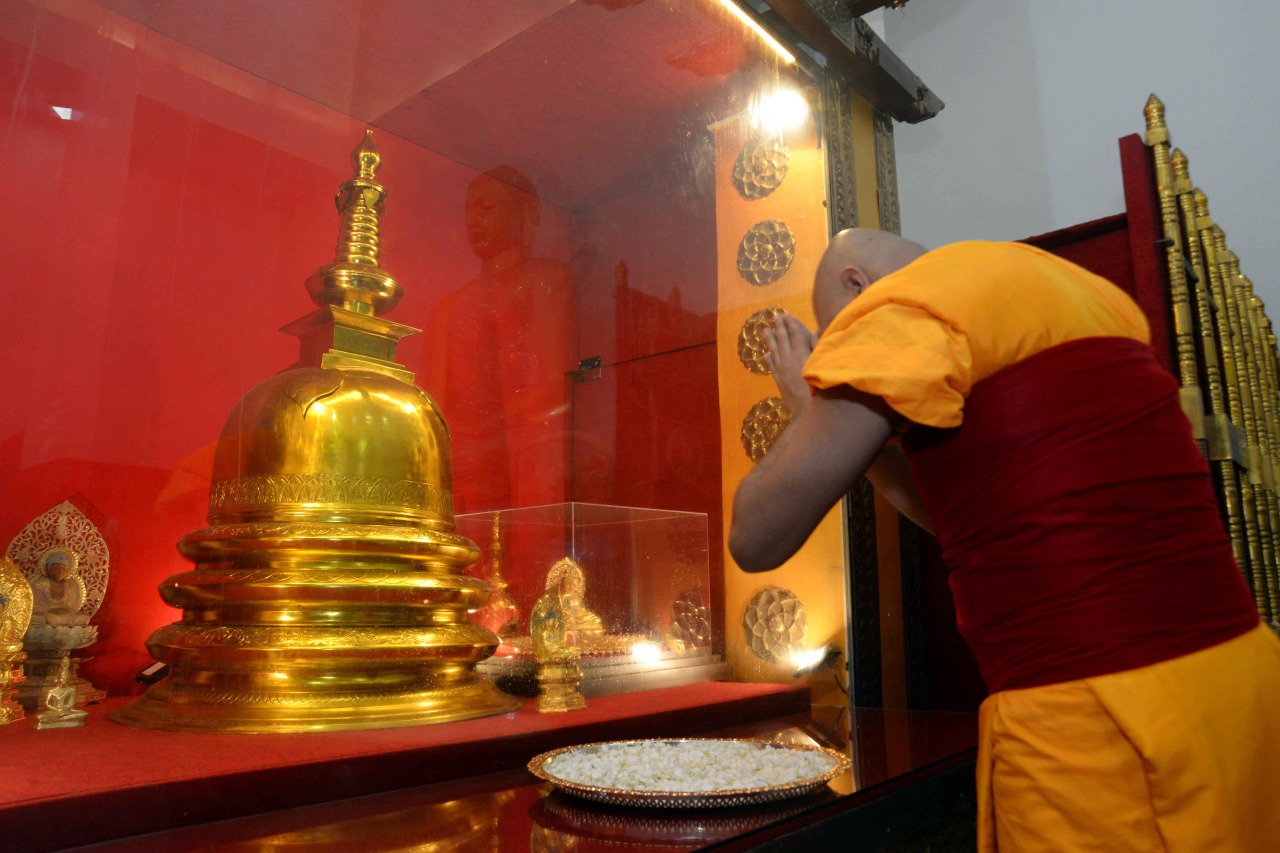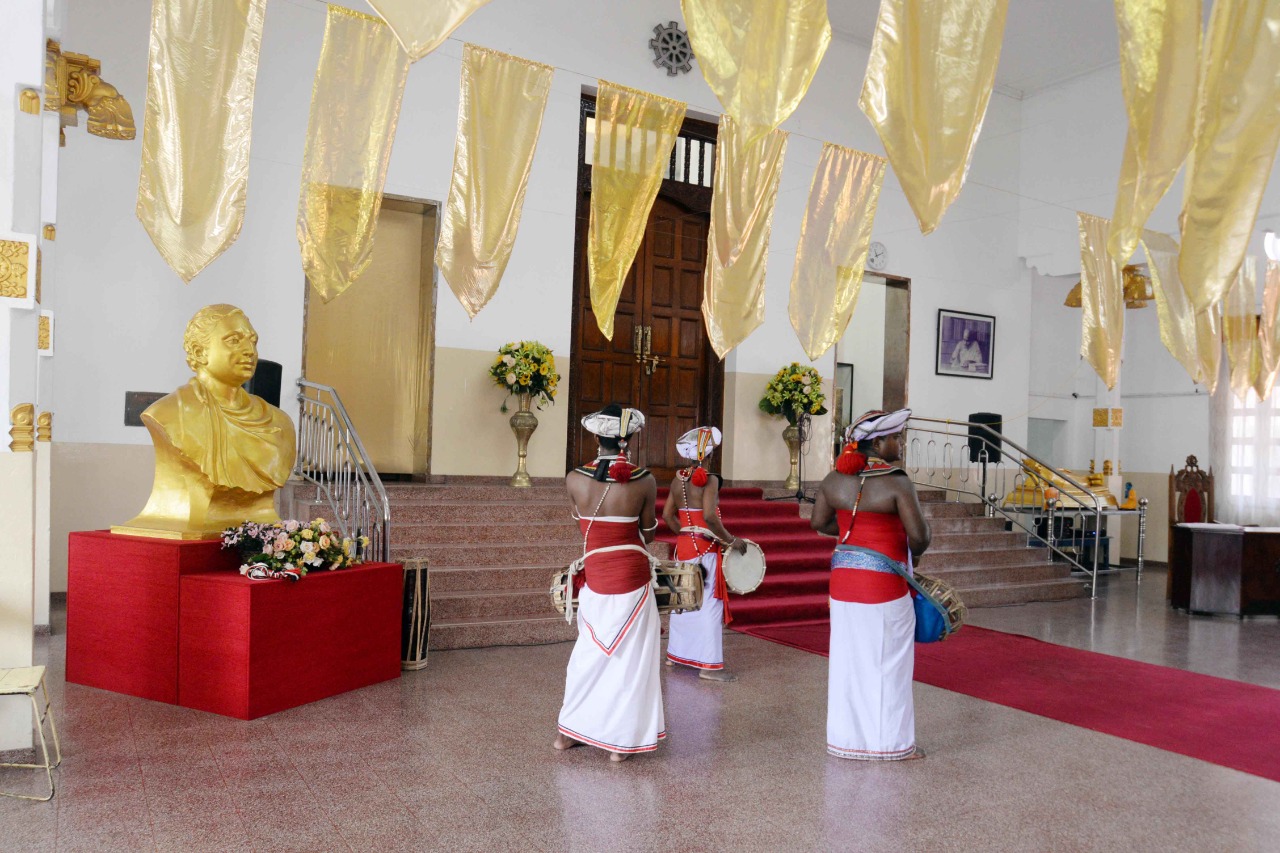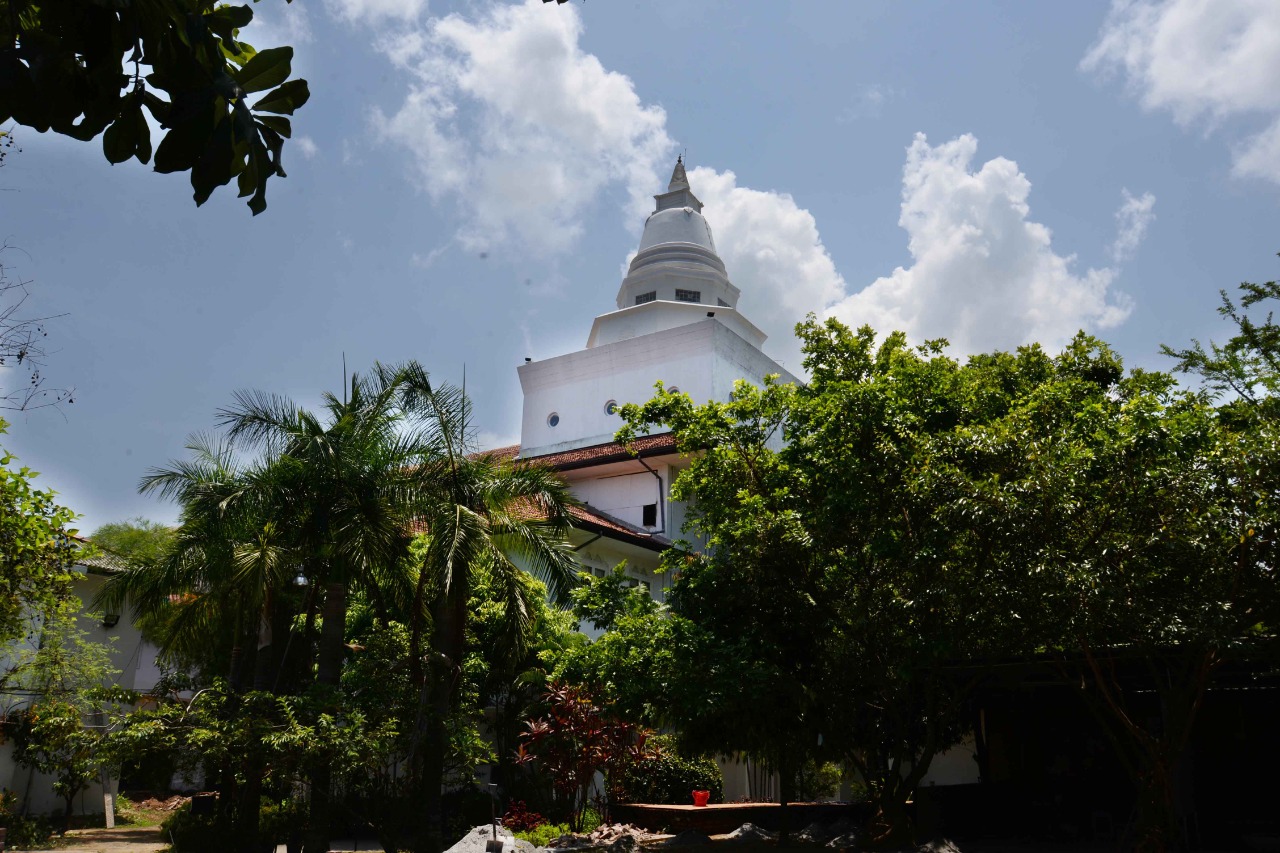The Maha Bodhi Society
The Maha Bodhi Society which was established in 1891 primarily to campaign for the recovery of the Maha Bodhi Temple in Buddha Gaya was separated into two entities in 1921 when legal requirements to register its operations in India necessitated the formation of a separate Maha Bodhi Society of India and the Maha Bodhi Society of Ceylon (now Sri Lanka). In 1926, the Anagarika established the British Maha Bodhi Society in the United Kingdom. Thereafter, Maha Bodhi Societies were established in many parts of the world including America, Japan etc., The Maha Bodhi Society of Ceylon (now Sri Lanka) was a hive of activity in the early years, especially involved in establishing schools for rural Buddhist children who could not get proper secondary education unless they enrolled in a Christian missionary school.
Though pirivena (temple) education was the origin of formal education in the country, the advent of missionaries imported a far more advanced standard of education. The downside however, was that religion (Christianity) was taught at these schools, with religious observations, a subtle form of conversion. Several schools did not admit children unless they had been baptized. At the very beginning, the Society teamed up with Colonel H.S. Olcott and educationists like C.W. Leadbeater together with the Buddhist Theosophical Society (BTS) towards this gigantic task. At the time the post-independence government of Sri Lanka took over all private schools in 1962, the Maha Bodhi Society of Sri Lanka was administering 102 schools in the country.
With Anagarika Dharmapala’s breakaway from the BTS, the Maha Bodhi Society established its own Schools Department. Its first school was the Maligakanda Buddhist English School, begun in the latter part of the 18th century. Ananda College, started by the BTS, was a bigger school that attracted the children from more affluent families, while the Society’s school nearby provided free education to the poorer children. Eighty six (86) students enrolled at the school at the launch. By the first decade of the 19th century, the Maha Bodhi Society was making an impact challenging the British Raj in more ways than one. They were also engaging on the economic front purchasing plantation estates, especially in the southern Galle district and giving employment to Buddhists. The purpose was to uplift the living standards of the rural Buddhists and prevent them from having to convert to get a job.
When the 1915 riots broke out, the British Colonial Government exploited the situation to crack down on the Society. Twenty eight (28) schools were managed by the Society at the time. Their funding was suspended. It’s newspaper, The Sinhala Bauddhaya press was sealed, and because they couldn’t get at Anagarika Dharmapala, they arrested his brother Edmund Hewavitarne and slapped him, and another with trumped up charges of treason and shop-breaking and tried them both under Martial Law. After the dust had settled from those riots, the schools managed by the Society were returned but not before having to “repurchase” them at the rate of Rs. 1,000 each. The Hewavitarne family firm, H. Don Carolis & Sons provided the desk and chairs and the Society not only paid the salaries but went on to start a teacher training school.
When the British colonial government only wanted Ceylon as a huge tea garden with rubber and spices for its markets, industrialization was the last thing on its mind. All industrial goods for Ceylon were imported from Britain. However, the Maha Bodhi Society started Sri Lanka’s first industrialisation programme. In 1912, the Hewavitarne Industrial Centre was started and young Ceylonese persons were sent by the Society to Japan to learn from its industries and others to Sweden to learn how to manufacture safety matches. The Hewavitarne Industrial Scholarship Scheme picked young persons to go to India and learn spinning and weaving. They returned and started the country’s first safety match factory, first as “Three Gems” and then as the “Two Elephants” brand. During the 1915 riots, the British Government even closed the Hewavitarne Industrial School which shows how they targeted the activities of the Society.
Using the newly formed Maha Bodhi Society as the vehicle for his nationalist crusade, Anagarika Dharmapala vigorously campaigned against British rule during his many visits to rural Ceylon establishing schools, purchasing properties and uplifting Buddhist temples that were on the verge of closure. The Society’s other voice was the Sinhala Bauddhaya newspaper in its relentless campaign against foreign rule. The newspaper first came out on Vesak day 1906 and would carry the speeches of Dharmapala in the countryside to a wider audience. “You Sinhalese, rise from your slumber” was the refrain. The newspaper carried not only Buddhist news and Dharmapala’s speeches, but also general news, of the war (World War 1), politics, economics and features on social issues. The newspaper continues to this date, released monthly on poya (full moon) days.
It was only in 1933 and thereafter with the opening of the Sarnath Mulaghandakuti Vihara, that Sri Lankan pilgrims began journeying in numbers to pay homage to the Buddha in India. The Maha Bodhi Society of India had arranged for concessionary fares on Indian Railways for pilgrims. Since then, thousands of Sri Lankans have availed themselves of the opportunity to visit these holy places. The Government of India has now opened international airports in Varanasi (near Sarnath) and at Gaya (near Buddha Gaya) and inThe Society opened a branch at the holy city of Anuradhapura for a brief period during which it published a newspaper called the Maha Bodhi Sangarawa (Maha Bodhi Journal). Among the activities of the Society is the sending of Sri Lankan pilgrims to the holy Buddhist sites in India. The first pilgrim party that went under the auspices of the Society in 1925 were Mr and Mrs Neil Hewavitarne and Mr and Mrs Raja Hewavitarne and Mr. K. T. Wimalasekera. It was a time when the battle for Buddha Gaya was still raging and only the Anagarika Dharmapala and a few Buddhist monks from Ceylon had visited the site. It was not entirely safe at the time.
2021 at Kushinara (where the Buddha passed away) for the thousands of pilgrims who visit these sites from Buddhist countries.
The Anagarika Dharmapala Trust put up a new building at the Trust’s headquarters called the Maha Bodhi Mandiraya opposite the Vidyodaya Pirivena where the Anagarika Dharmapala formed the Maha Bodhi Society in 1891.
The ‘Agrasravaka Vihara’ of the Maha Bodhi Mandiraya houses the sacred relics of The Arahats, The Most Venerable Moggallana and The Most Venerable Sariputta, two of the Buddha’s principal disciples. Their holy relics were found in Sanchi, India taken to the British Victoria and Albert Museum and handed over by the Secretary of State for India of the British Colonial Government to the British Maha Bodhi Society to be brought to Sri Lanka.
* (References; ‘They Turned The Tide’ and ‘Maha Bodhi Kathawa’ – The 100 year history of the Maha Bodhi Society of Sri Lanka by Sinha Ratnatunga; Government Press, Sri Lanka 1991).


